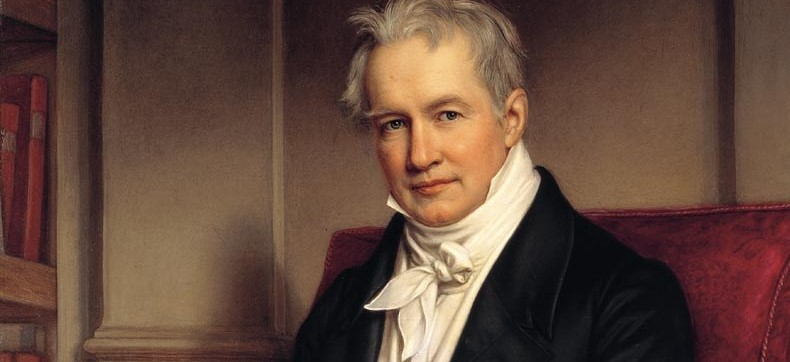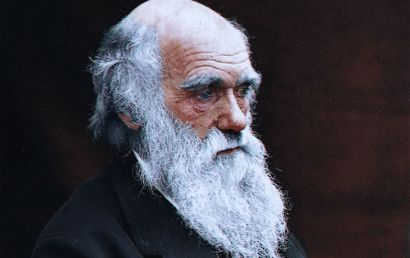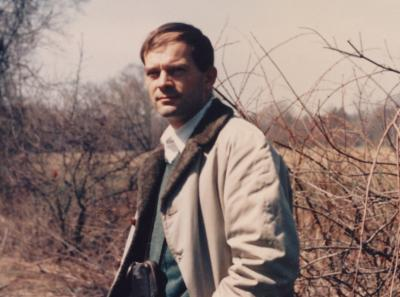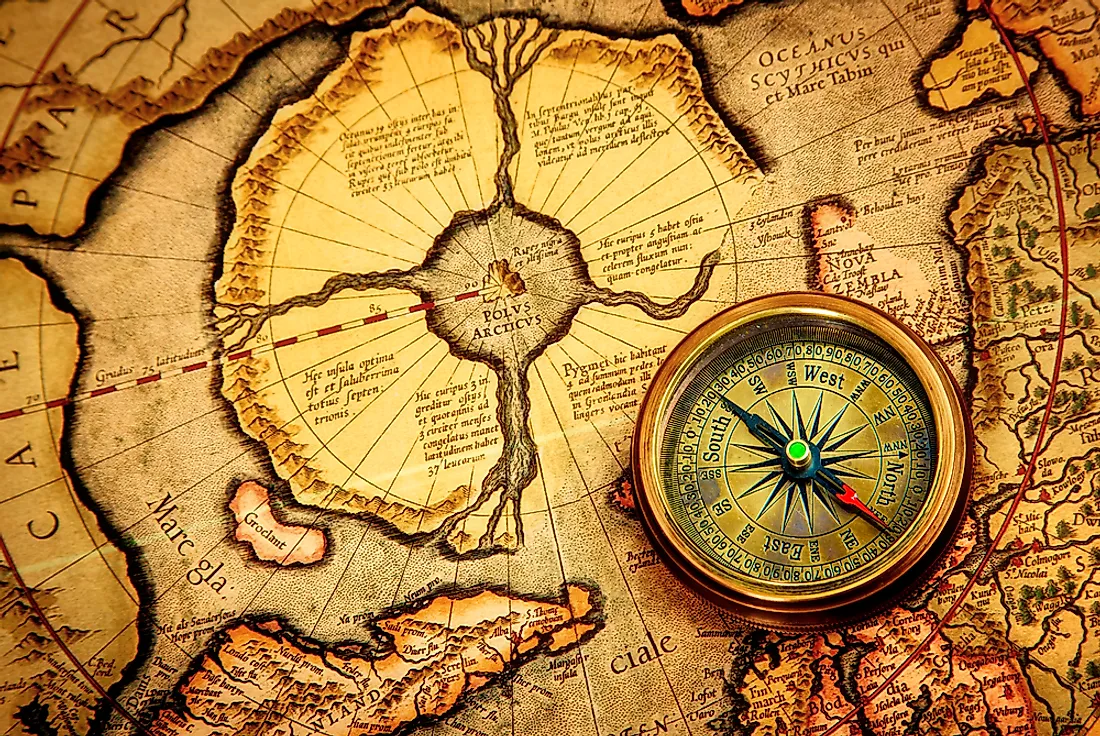Biogeography, the study of the distribution of species and ecosystems in geographic space and through geological time, has been a fascinating field of research for centuries. It encompasses a wide range of disciplines, including biology, geography, geology, and ecology, and has played a crucial role in our understanding of the natural world. Throughout history, numerous brilliant minds have contributed to the field of biogeography, making groundbreaking discoveries and developing innovative theories that have shaped our knowledge of the Earth’s biodiversity.
From the early explorers who documented the diversity of life in far-flung corners of the world to the modern-day scientists who use cutting-edge technologies to study the complex interactions between species and their environments, biogeographers have been at the forefront of some of the most exciting and important scientific discoveries of our time. Their work has not only advanced our understanding of the natural world but has also informed conservation efforts and shaped public policy on issues ranging from habitat protection to climate change mitigation.
In this article, we will explore the lives and contributions of the top 12 most influential biogeographers in history. These individuals have made lasting impacts on the field, and their work continues to inspire and guide new generations of scientists. By examining their achievements and legacies, we gain a deeper appreciation for the importance of biogeography and the crucial role it plays in our understanding of the world around us.
Alexander von Humboldt (1769-1859)

Alexander von Humboldt, a Prussian polymath, is often considered the father of biogeography. His extensive travels and meticulous observations laid the foundation for the field and inspired countless scientists who followed in his footsteps. Humboldt’s most famous work, “Cosmos,” was a five-volume treatise that attempted to unify the various branches of scientific knowledge, including geography, geology, and ecology.
During his travels in South America and Europe, Humboldt documented the distribution of plants and animals and developed the concept of “isotherms,” lines on a map connecting points with the same average temperature. He also recognized the influence of climate and elevation on the distribution of species, a concept that would later become known as the “Humboldt effect.”
Humboldt’s work had a profound impact on the development of biogeography and ecology, and his ideas continue to shape our understanding of the natural world to this day. His interdisciplinary approach to science and his emphasis on the interconnectedness of all natural phenomena have inspired generations of scientists and have helped to establish biogeography as a vital field of research.
Alfred Russel Wallace (1823-1913)

Alfred Russel Wallace, a British naturalist and explorer, is best known for his contributions to the theory of evolution by natural selection, which he developed independently of Charles Darwin. However, Wallace was also a pioneering biogeographer whose work helped to establish the field as a distinct scientific discipline.
During his travels in the Malay Archipelago, Wallace documented the distribution of species and developed the concept of the “Wallace Line,” a boundary that separates the fauna of Asia and Australia. He also recognized the importance of geographic isolation in the evolution of species, a concept that would later become known as “allopatric speciation.”
Wallace’s work had a significant impact on the development of biogeography and evolutionary biology, and his ideas continue to shape our understanding of the natural world. His emphasis on the importance of geographic factors in shaping the distribution and evolution of species has inspired generations of biogeographers and has helped to establish the field as a crucial area of scientific inquiry.
Philip Lutley Sclater (1829-1913)
Philip Lutley Sclater, a British lawyer and zoologist, is best known for his work on the distribution of birds and his development of the concept of “faunal regions.” In 1858, Sclater published a paper in which he divided the world into six distinct biogeographic regions based on the distribution of bird species: the Palaearctic, Ethiopian, Indian, Australasian, Nearctic, and Neotropical regions.
Sclater’s work laid the foundation for the modern understanding of biogeography and inspired countless scientists who followed in his footsteps. His emphasis on the importance of geographic barriers in shaping the distribution of species has become a central tenet of biogeography, and his faunal regions continue to be used as a framework for understanding global biodiversity patterns.
Sclater’s contributions to biogeography extended beyond his work on birds. He was also a prolific taxonomist who described numerous new species and genera, and he played a key role in the development of the British Museum’s natural history collections. His legacy continues to inspire new generations of biogeographers and naturalists, and his work remains a cornerstone of our understanding of the natural world.
Charles Darwin (1809-1882)

Charles Darwin, the British naturalist and geologist, is best known for his groundbreaking work on the theory of evolution by natural selection. However, Darwin was also a pioneering biogeographer whose work helped to establish the field as a distinct scientific discipline.
During his famous voyage on the HMS Beagle, Darwin collected specimens and made observations on the distribution of species in various parts of the world. He recognized the importance of geographic isolation in the evolution of species and developed the concept of “adaptive radiation,” the process by which a single ancestral species gives rise to multiple descendant species adapted to different ecological niches.
Darwin’s work had a profound impact on the development of biogeography and evolutionary biology, and his ideas continue to shape our understanding of the natural world. His emphasis on the importance of adaptation and natural selection in shaping the distribution and evolution of species has become a central tenet of modern biology, and his work has inspired countless scientists who have followed in his footsteps.
Alfred Wegener (1880-1930)

Alfred Wegener, a German meteorologist and geophysicist, is best known for his groundbreaking work on the theory of continental drift. However, Wegener was also a pioneering biogeographer whose work helped to establish the field as a distinct scientific discipline.
Wegener recognized the importance of geographic factors in shaping the distribution of species and developed the concept of “continental drift,” the idea that the Earth’s continents have moved and changed position over geological time. He argued that the similarities in fossil records and living species on different continents could be explained by the movement of land masses, a concept that was initially met with widespread skepticism but has since become a cornerstone of modern geology and biogeography.
Wegener’s work had a significant impact on the development of biogeography and Earth sciences, and his ideas continue to shape our understanding of the natural world. His emphasis on the importance of geological processes in shaping the distribution of species has become a central tenet of modern biogeography, and his work has inspired countless scientists who have followed in his footsteps.
Ernst Mayr (1904-2005)

Ernst Mayr, a German-American evolutionary biologist and ornithologist, is best known for his contributions to the modern synthesis of evolutionary biology. However, Mayr was also a pioneering biogeographer whose work helped to establish the field as a distinct scientific discipline.
Mayr’s work focused on the role of geographic isolation in the evolution of species, and he developed the concept of “allopatric speciation,” the process by which new species arise as a result of geographic isolation. He also recognized the importance of ecological factors in shaping the distribution of species and developed the concept of “ecological isolation,” the idea that species can be isolated from one another by differences in their ecological niches.
Mayr’s work had a profound impact on the development of biogeography and evolutionary biology, and his ideas continue to shape our understanding of the natural world. His emphasis on the importance of geographic and ecological factors in shaping the evolution of species has become a central tenet of modern biogeography, and his work has inspired countless scientists who have followed in his footsteps.
Robert H. MacArthur (1930-1972)

Robert H. MacArthur, an American ecologist and evolutionary biologist, is best known for his contributions to the development of island biogeography theory. Along with E.O. Wilson, MacArthur developed a mathematical model that explained the relationship between island size, distance from the mainland, and species richness, a concept that has become a cornerstone of modern biogeography.
MacArthur’s work also focused on the role of competition in shaping the distribution of species, and he developed the concept of the “ecological niche,” the idea that species occupy distinct roles in their ecosystems based on their resource requirements and interactions with other species. He recognized the importance of niche partitioning in allowing multiple species to coexist in the same habitat, a concept that has become a central tenet of community ecology.
MacArthur’s work had a significant impact on the development of biogeography and ecology, and his ideas continue to shape our understanding of the natural world. His emphasis on the importance of ecological interactions in shaping the distribution of species has inspired countless scientists who have followed in his footsteps, and his work remains a cornerstone of modern biogeography and conservation biology.
E.O. Wilson (1929-2021)

E.O. Wilson, an American biologist and naturalist, is best known for his contributions to the fields of biogeography, ecology, and sociobiology. Along with Robert H. MacArthur, Wilson developed the theory of island biogeography, which has become a cornerstone of modern biogeography and conservation biology.
Wilson’s work also focused on the importance of biodiversity and the role of human activities in shaping the distribution of species. He recognized the devastating impact of habitat destruction and introduced the concept of “biophilia,” the idea that humans have an innate affinity for nature and a responsibility to protect it.
Wilson’s contributions to biogeography and conservation biology have had a profound impact on our understanding of the natural world and the urgent need to protect it. His work has inspired countless scientists and conservationists who have followed in his footsteps, and his legacy continues to shape the field of biogeography and inform global conservation efforts.
Jared Diamond (1937-)

Jared Diamond, an American geographer, historian, and author, is best known for his work on the evolution of human societies and the role of geography in shaping the course of human history. His book “Guns, Germs, and Steel” (1997) explored the reasons behind the unequal distribution of wealth and power among different societies and argued that geographic factors played a crucial role in determining the fates of human populations.
Diamond’s work also focused on the importance of biodiversity and the role of human activities in shaping the distribution of species. He recognized the devastating impact of invasive species and habitat destruction on native ecosystems and argued for the need to protect and restore biodiversity.
Diamond’s contributions to biogeography and human history have had a significant impact on our understanding of the complex interplay between geography, ecology, and human societies. His work has inspired countless scientists, conservationists, and policymakers who have followed in his footsteps, and his ideas continue to shape global discussions on sustainability, conservation, and social justice.
Mark V. Lomolino (1957-)

Mark V. Lomolino, an American ecologist and biogeographer, is best known for his contributions to the development of island biogeography theory and his work on the biogeography of mammals. Lomolino’s research has focused on the factors that shape the distribution of species across islands and continents, and he has made significant contributions to our understanding of the role of geographic isolation in the evolution of species.
Lomolino’s work has also focused on the importance of conservation biogeography, the application of biogeographic principles to the conservation of biodiversity. He has argued for the need to incorporate biogeographic considerations into conservation planning and has developed new approaches to identifying and prioritizing areas for conservation based on their biogeographic significance.
Lomolino’s contributions to biogeography and conservation biology have had a significant impact on our understanding of the natural world and the urgent need to protect it. His work has inspired countless scientists and conservationists who have followed in his footsteps, and his ideas continue to shape the field of biogeography and inform global conservation efforts.
James H. Brown (1942-)

James H. Brown, an American ecologist and biogeographer, is best known for his contributions to the development of macroecology, the study of ecological patterns and processes at large spatial and temporal scales. Brown’s work has focused on the factors that shape the distribution and abundance of species across continents and the role of energy and resources in driving ecological processes.
Brown’s work has also focused on the importance of biodiversity and the role of human activities in shaping the distribution of species. He has argued for the need to develop a more holistic understanding of the natural world that integrates insights from ecology, biogeography, and Earth system science.
Brown’s contributions to biogeography and macroecology have had a significant impact on our understanding of the complex interplay between ecological and evolutionary processes at large scales. His work has inspired countless scientists who have followed in his footsteps, and his ideas continue to shape the field of biogeography and inform global efforts to understand and protect the natural world.
Robert J. Whittaker (1948-)

Robert J. Whittaker, a British ecologist and biogeographer, is best known for his contributions to the development of island biogeography theory and his work on the biogeography of plants. Whittaker’s research has focused on the factors that shape the distribution of species across islands and continents, and he has made significant contributions to our understanding of the role of geographic isolation in the evolution of species.
Whittaker’s work has also focused on the importance of conservation biogeography and the need to develop more effective strategies for protecting biodiversity in a rapidly changing world. He has argued for the need to incorporate biogeographic considerations into conservation planning and has developed new approaches to identifying and prioritizing areas for conservation based on their biogeographic significance.
Whittaker’s contributions to biogeography and conservation biology have had a significant impact on our understanding of the natural world and the urgent need to protect it. His work has inspired countless scientists and conservationists who have followed in his footsteps, and his ideas continue to shape the field of biogeography and inform global conservation efforts.
Conclusion
The field of biogeography has been shaped by the contributions of numerous brilliant scientists who have dedicated their lives to understanding the complex interplay between species, ecosystems, and geographic space. From the early pioneers who laid the foundation for the field to the modern-day experts who continue to push the boundaries of our knowledge, these scientists have made groundbreaking discoveries and developed innovative theories that have revolutionized our understanding of the natural world.
The top 12 most influential biogeographers in history, as discussed in this article, have each made unique and lasting contributions to the field. Their work has advanced our understanding of the processes that shape the distribution of species across continents and islands, the role of geographic isolation in the evolution of species, and the importance of biodiversity in maintaining the health and resilience of ecosystems.
As we face the challenges of a rapidly changing world, the insights and tools provided by biogeography have never been more important. By studying the work and legacy of these influential biogeographers, we gain a deeper appreciation for the complexity and beauty of the natural world, and for the dedicated scientists who have worked tirelessly to unlock its secrets.
Looking to the future, it is clear that the field of biogeography will continue to play a crucial role in shaping our understanding of the world around us and informing our efforts to protect and conserve it. As new technologies and approaches emerge, biogeographers will be at the forefront of some of the most exciting and important scientific discoveries of our time, working to unravel the mysteries of life on Earth and ensure its survival for generations to come.

